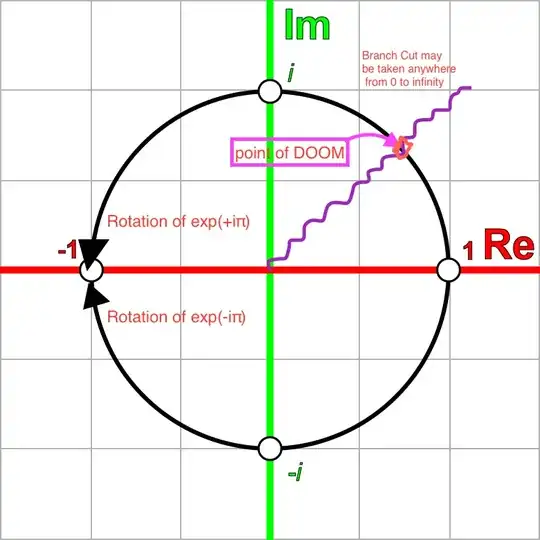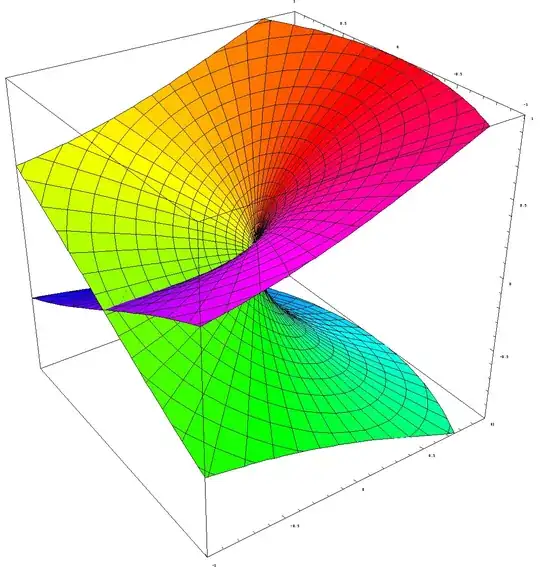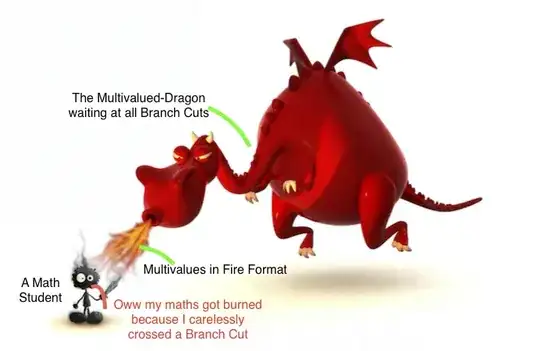If $z$ and $w$ are two complex numbers, then it is not true in general
$$
\sqrt{z}\sqrt{w}=\sqrt{zw} \tag{*}\label{*} \, .
$$
The 'rule' $\sqrt{\dfrac{z}{w}}=\dfrac{\sqrt{z}}{\sqrt{w}}$ also does not hold in general, as saying that $\sqrt{\dfrac{z}{w}}=\dfrac{\sqrt{z}}{\sqrt{w}}$ is equivalent to saying that $\sqrt{w}\sqrt{\dfrac{z}{w}}=\sqrt{z}$, which is a special case of $\eqref{*}$.
So why do these rules fail in the complex world, and what do we mean by the square root of a complex number in the first place? These are good questions, and the answers are more ... complex ... than one might expect.
When working in the real numbers, if $x$ is positive then the symbol "$\sqrt{x}$" refers to the positive number $a$ such that $a^2=x$. Although $2$ and $-2$ are both square roots of $4$, we designate $2$ as the principal root, and write $\sqrt{4}=2$. We adopt this notational convention so that $\sqrt{}$ is a function which has a single output.
Things become trickier in the complex world, as there is no such thing as "positive" and "negative" complex numbers. (To be precise, the complex numbers are not an ordered field, and so any attempt to define the terms "positive" and "negative" will have limited success.) On what grounds can we say that $i$ is the principal square root of $-1$, then? Both $i$ and $-i$ are square roots of $-1$, but neither of them are positive. It is for this reason that some mathematicians would argue that the notation $i=\sqrt{-1}$ should be avoided entirely (see Ihf's answer).
If we do insist upon defining the function $\sqrt{}$ in the complex world, then here is one possible approach. Every non-zero complex number $z$ can be uniquely written in the form $r\exp(i\theta)$, where $\theta \in (-\pi,\pi]$ (we say that $\theta$ is the principal argument of $z$). If $z=r\exp(i\theta)$, then we could define
$$
\sqrt{z} = \sqrt{r}\exp\left(\frac{i\theta}{2}\right) \, ,
$$
where $\sqrt{r}$ denotes the positive real root of $r$. This means that if $z=r_1\exp(i\theta_1)$ and $w=r_2\exp(i\theta_2)$ (with $\theta_1$ and $\theta_2$ being the principal arguments of $z$ and $w$, respectively), then
\begin{align}
\sqrt{z}\sqrt{w} &= \sqrt{r_1}\exp\left(\frac{i\theta_1}{2}\right)\sqrt{r_2}\exp\left(\frac{i\theta_2}{2}\right) \\
&= \sqrt{r_1}\sqrt{r_2}\exp\left(\frac{i\theta_1}{2}\right)\exp\left(\frac{i\theta_2}{2}\right) \\
&= \sqrt{r_1r_2}\exp\left(\frac{i(\theta_1+\theta_2)}{2}\right) \, .
\end{align}
It appears that the final expression is the very definition of $\sqrt{zw}$, but be careful. Notice that we defined $\sqrt{z}$ as $\sqrt{r}\exp\left(\frac{i\theta}{2}\right)$, where $\theta$ is the principal argument of $z$. If $\theta_1+\theta_2\not\in(-\pi,\pi]$, then $\theta_1+\theta_2$ is not the principal argument of $zw$, and so it might not the case that
$$
\sqrt{zw} = \sqrt{r_1r_2}\exp\left(\frac{i(\theta_1+\theta_2)}{2}\right) \, .
$$
As it turns out, unless $\theta_1 + \theta_2$ is the principal argument of $zw$, the 'rule' $\sqrt{z}\sqrt{w}=\sqrt{zw}$ fails. This is what is going on in your question. You wrote
$$
\sqrt{\frac{1}{-1}} = \frac{\sqrt{1}}{\sqrt{-1}} \, ,
$$
which is equivalent to saying that
$$
\sqrt{-1}\sqrt{\frac{1}{-1}} = \sqrt{1} \, .
$$
or
$$
\sqrt{-1}\sqrt{-1} = \sqrt{1} \, .
$$
This is obviously incorrect because the $\text{LHS}=i^2=-1$, while the $\text{RHS}=1$. The deeper reason for why equality does not hold is because the principal argument of $-1$ is $\pi$, but the principal argument of $1$ is not $\pi+\pi=2\pi$.
What do we learn from this fake proof? Well, the $\sqrt{}$ function is much less well-behaved in the complex numbers compared to the real numbers, to the point where some mathematicians abstain from defining $\sqrt{z}$ entirely. More generally, we are reminded that applying 'rules' without checking whether we have satisfied the conditions to apply them inevitably leads to trouble.


